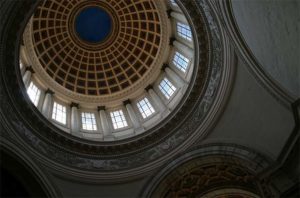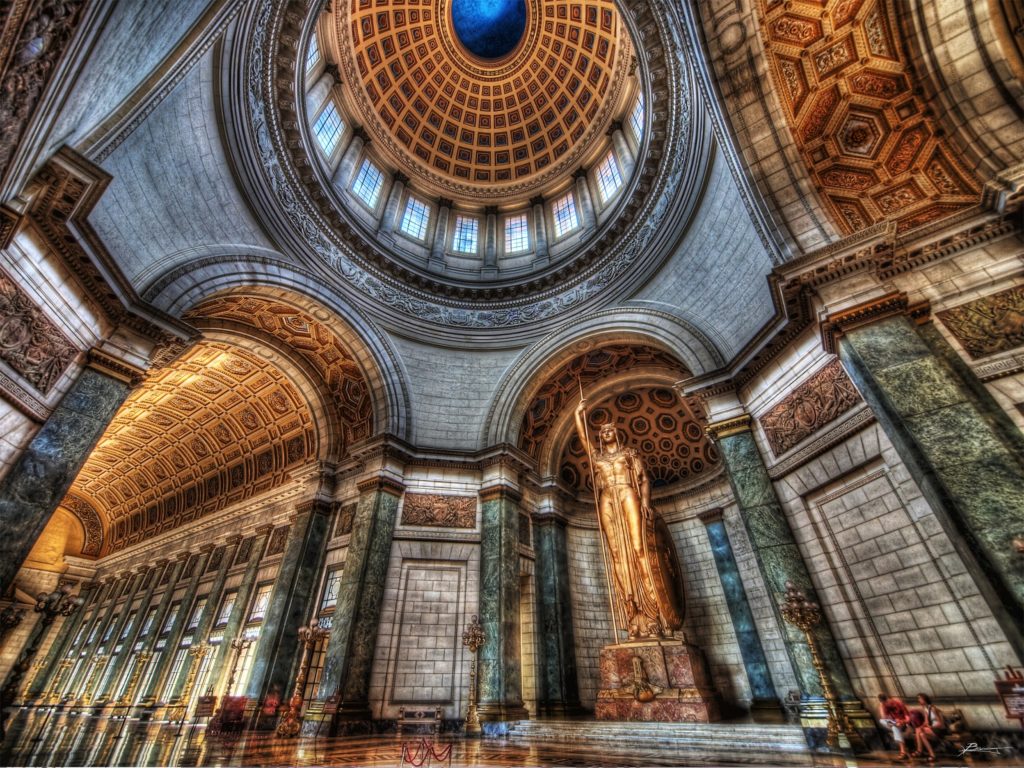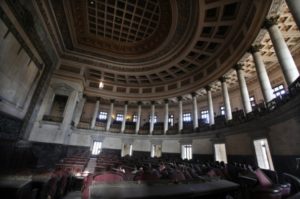Our National Capitol, a jewel that still retains some of its splendor, was inaugurated by then President Gerardo Machado y Morales on May 20, 1929 and officially delivered to the Congress of the Republic on February 24, 1931 by giving them the keys to the National Congress that met that day in its effect. The fact happened at three in the afternoon of that distant historical date.
This magnificent structure, similar to the National Capitol of the United States, had four floors in an area of 14 thousand square meters.
In its construction had been used 25 million cubic meters of stone and for the knowledge of our readers in their work had involved a worker who over the years would have become in Spain one of the heroes of the Spanish Republic, that man it would be later General Enrique Lister.
According to data provided by newspapers of the time and reliable records, 40 thousand sacks of plaster and 5 million bricks had been used in its construction; three million and a half feet of wood as well as 150 thousand barrels of cement of great quality. Eight thousand tons of marble of 82 different classes; two hundred tons of bronze and 38 thousand cubic meters of sand.
In its interior the Cuban Capitol exhibited a beautiful and valuable bright of 25 carats that had been placed with the specific purpose of that marks the km zero of all the distances of the Cuban island. Thing that was taken as a joke by all the press of the time and the population in general that commented with a certain irony and sarcasm; “the Romans measured their distances from a landmark located in their Capitol, the French, from the famous Arc de Triomphe Parisine, and in the US the Eastern road system starts from the needle of the Capitol of Washington. Cuba could not be less.”.
In Havana, the brilliant, embedded under the dome needle, would not only mark the starting point of the Central Highway, but would divide in two that luxurious space, a kind of tunnel inspired by the cylindrical gallery of the basilica of San Pedro , in the Vatican. The left wing would correspond to the Senate; the right, to the House of Representatives.
The jewel was considered one of the best protected treasures of the Republic. It had been set in agate and platinum before being placed in a block of andesite, the strongest granite in the world, and this one was in turn covered by another of concrete, when it was embedded in the floor, in the center of the room. A carved crystal, so solid that it was considered unbreakable, reinforced its shelter, even when it was violated in one occasion by expert shards.
When the Capitol was inaugurated on May 20, 1929, the brilliant was already in place and for its sumptuous bonding, the carving and its surprising yellow glow was the center of attention of national personalities and foreign dignitaries who attended that day to the inauguration of President Machado, bent on extending himself in power against the opinion of the most responsible sectors of the country. Two years later, on February 24, 1931, when the state officially transferred the building to the Congress of the Republic, the jewel continued to be the point of attraction for Cuban and other visitors.
It is still remembered that the National Capitol was inaugurated and in its interior already had been installed 227 telephones to serve to the many offices expected for its function; at the same time there were 100 clocks installed throughout the length and breadth of the magnificent structure.
Currently in Cuba the National Capitol has been in repair for several years, in a slow but apparently meticulous work to restore the beauties that lost in many years of abandonment.
UN INFORME SOLO PARA AQUELLOS QUE NO CONOCIERON AL ORIGINAL CAPITOLIO NACIONAL CUBANO.
Nuestro Capitolio Nacional, una joya que todavia conserva algo de su esplendor, fue inaugurado por el entonces presidente Gerardo Machado y Morales el 20 de Mayo de 1929 y entregado de forma oficial al Congreso de la Republica el 24 de Febrero de 1931 al darles este las llaves al Congreso Nacional que se reunia ese dia en su efecto. El hecho ocurrio a las tres de la tarde de esa lejana fecha historica.
Esa magnifica estructura hecha a semejanza del Capitolio Nacional de los Estados Unidos contaba con cuatro plantas en un area de 14 mil metros cuadrados.
En su construccion se habian utilizado 25 millones de metros cubicos de piedra y para el conocimiento de nuestros lectores en su trabajo laboral hubo entonces de participar un obrero que con los años se habria de convertír en España en uno de los heroes de la República Española, ese hombre seria mas tarde el General Enrique Lister.
Segun datos aportados por diarios de la época y records confiables, en su construcción se habian utilizado 40 mil sacos de yeso y 5 millones de ladrillos; tres millones y medio de pies de madera asi como 150 mil barriles de cemento de gran calidad. Ocho mil toneladas de marmol de 82 diferentes clases; doscientas toneladas de bronce y 38 mil metros cubicos de arena.
En su interior el Capitolio Cubano exponia un bello y valioso brillante de 25 quilates que se habia situado con el especifico fin de que marcara el kilometro cero de todas las distancias de la isla cubana. Cosa que se tomo como un chiste por toda la prensa de la epoca y la poblacion en general que comentaban con cierta ironia y sarcasmo; “los romanos medían sus distancias a partir de un hito situado en su Capitolio, los franceses, desde el célebre Arco de Triunfo Parisino, y en EE UU el sistema vial del Este arranca desde la aguja del Capitolio de Washington. Cuba no podía ser menos”.
En La Habana, el brillante, empotrado bajo la aguja de la cúpula, no solo marcaría el punto inicial de la carretera Central, sino que dividiría en dos ese lujoso espacio, una especie de túnel inspirado en la galería cilíndrica de la basílica de San Pedro, en el Vaticano. El ala izquierda correspondería al Senado; la derecha, a la Cámara de Representantes.
La joya se consideraba uno de los tesoros mejor protegidos de la República. La habían engarzado en ágata y platino antes de introducirla en un bloque de andesita, el granito más fuerte del mundo, y este a su vez fue recubierto por otro, de concreto, al empotrarse en el piso, en el centro del Salón. Un cristal tallado, tan sólido que se estimaba irrompible, reforzaba su resguardo, aun cuando fue violentado en una ocasion por expertos cacos.
Cuando el Capitolio se inauguró el 20 de mayo de 1929, el brillante estaba ya en su sitio y por su engarce suntuoso, el tallado y su sorprendente fulgor amarillo fue el centro de la atención de las personalidades nacionales y los dignatarios extranjeros que ese día asistieron a la toma de posesión del presidente Machado, empeñado en prorrogarse en el poder en contra de la opinión de los sectores más responsables del país. Dos años después, el 24 de febrero de 1931, cuando el Estado, de manera oficial, traspasó el edificio al Congreso de la República, la joya continuó siendo el punto máximo de atracción de los visitantes cubanos y de otros países.
Aun se recuerda que el Capitolio Nacional fue inaugurado y en su interior habian sido instalado ya 227 telefonos para servir a los tantos oficios esperado para funcion del mismo; al mismo tiempo habian 100 relojes instalados a todo lo largo y ancho de la magnifica estructura.
Actualmente en Cuba el Capitolio Nacional se encuentra en reparacion desde hace ya varios años, en un trabajo lento pero al parecer meticuloso para restaurar las bellezas que perdió en muchos años de abandono.
Agencias/Wiki/Argelio Santiesteban/Internet Photos/ Arnoldo Varona/ TheCubanHistory.com
THE CUBAN HISTORY, HOLLYWOOD.












